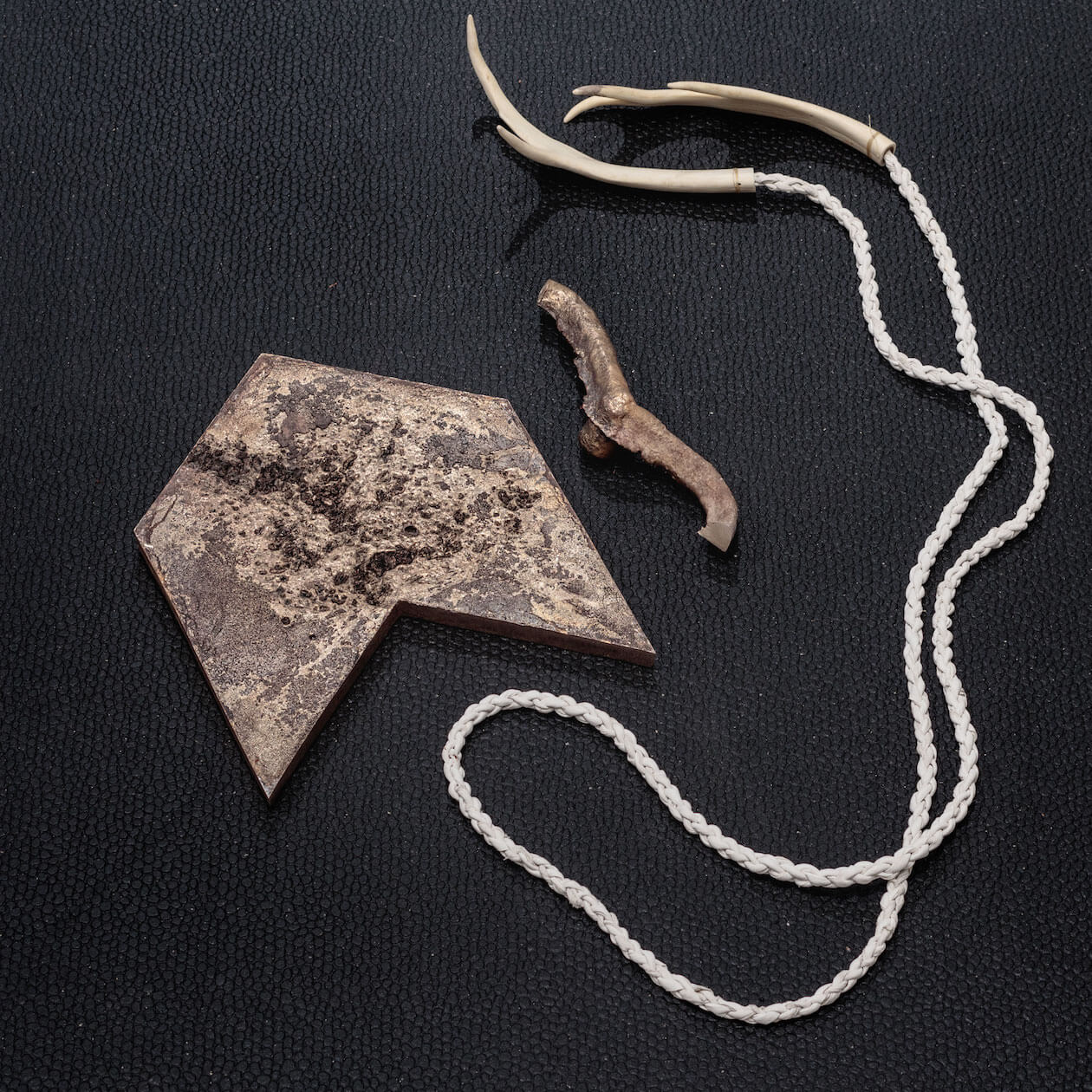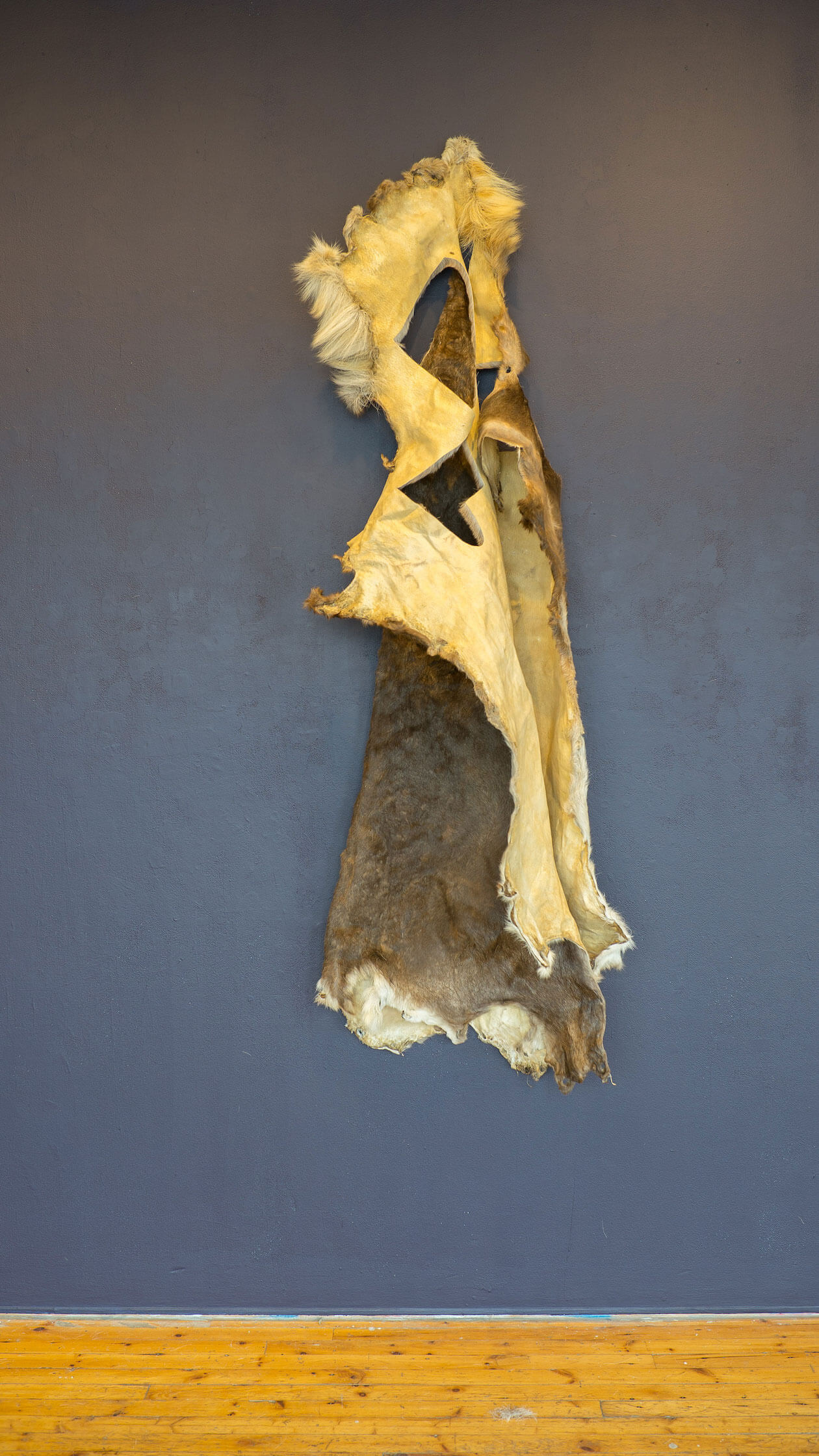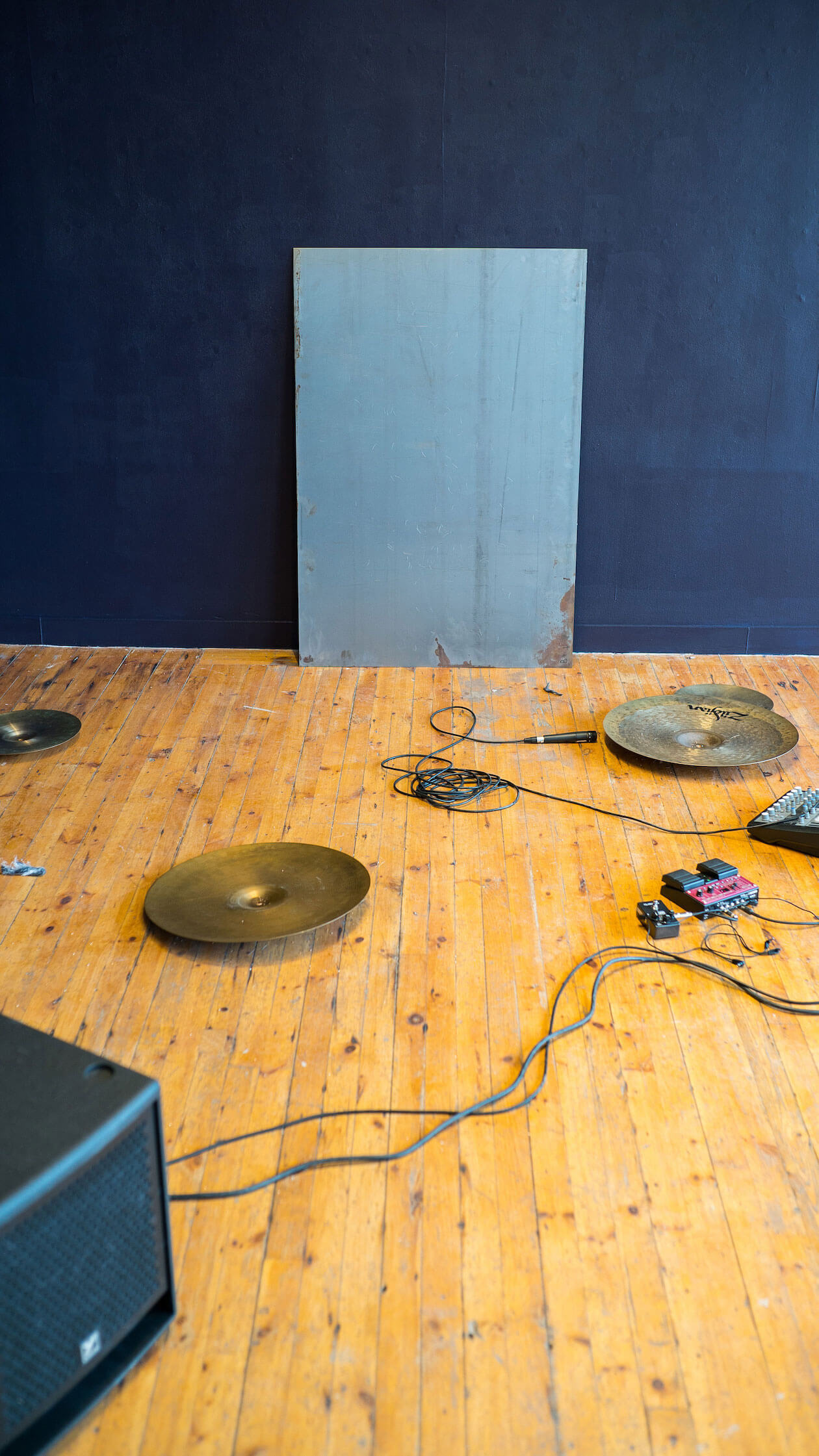In the northeastern corner of Alaska, along the Yukon border, is Iizhik Gwats’an Gwandaii Goodlit—“the sacred place where life begins” in Gwich’in, the language of one of Canada’s northernmost First Nations. Each summer, up to 40,000 caribou calves are born on this 607,000-hectare coastal plain. But the United States government has started opening up the region for oil-and-gas development, which would threaten the caribou’s breeding ground. “Our elders say that if there are no caribou, we’ll all cease to exist,” says Gwich’in interdisciplinary artist Jeneen Frei Njootli. “The caribou and we are intertwined.”

For Frei Njootli, who was born in Whitehorse, this relationship has become a recurring artistic theme. Visiting the community of Old Crow, where her family is from, is “like filling a culture-shaped hole,” she says.

ndn burn, Frei Njootli’s exhibition at New York’s Fierman gallery this spring, featured sound, photography, and textile pieces, such as a series of baseball caps made with porcupine quills, caribou fur, and black chains. But Frei Njootli is best known for intense performance pieces shaped by personal history and connection—to the caribou, to the territory, to noise. In one, she places a cymbal on the ground, loops the sound with a pedal, then sings over the feedback. “I’m enamoured by noise,” she says. “I really enjoy falling into it.”

Frei Njootli recognizes her work is not for everyone. In Herd, she grinds a set of caribou antlers with power tools, then amplifies and distorts the screech. The audience is given ear plugs and respiratory masks—bone dust and the smell of burning antler fill the air. Noise performances can be deeply visceral. Some leave the room. Others are lulled to sleep. Frei Njootli says she never knows what to expect: “We all have our own gazes, and we all have our own baggage.”




